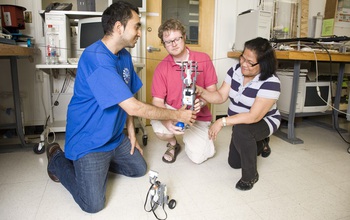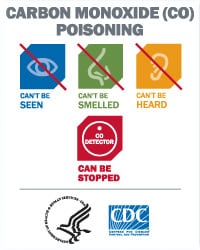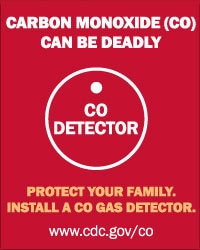DiscoveryWith NSF funding, Summer of STEM at NYU Polytechnic supports and encourages students and teachers in science, technology, engineering and mathematics
High-school teachers and Fellows work together in the SMART summer program. July 9, 2015 NYU Polytechnic School of Engineering kicks off its Summer of STEM today. Science, technology, engineering and mathematics are the focus, with both teachers and students gaining new opportunities for learning and development. Many of the projects announced today are funded by the National Science Foundation (NSF). Susan Singer, NSF's director of the Division of Undergraduate Education, joins NYU School of Engineering President and Dean Katepalli R. Sreenivasan and other officials to announce a number of efforts that make up the Summer of STEM. "It is a priority for NSF to invest in research that will engage students in STEM and give their teachers new tools for deepening their knowledge and integrating STEM topics into their students' learning," said Singer. "We at NSF are excited about the new and ongoing work at NYU Polytechnic." Some highlights: Discovery Research for Teachers: Four teachers--from P.S./I.S. 109 The Glenwood Academy of Science & Technology and Park Place Community Middle School 266, both in Brooklyn--will spend three weeks at the NYU School of Engineering as part of a comprehensive year-round STEM development program. Ultimately, 44 teachers from 22 New York City middle schools will participate in the new program, funded by a $2.5 million grant from the NSF Discovery Research K-12 program. NYU will field a team of interdisciplinary experts in robotics, engineering, education, curriculum design, and assessment to make robotics central to and sustainable in the city's science and math classrooms. Science and Mechatronics Aided Research for Teachers with an Entrepreneurship expeRience (SMARTER): This program pairs middle- and high-school teachers with faculty and graduate students in the NYU School of Engineering laboratories for two weeks of advanced STEM workshops and four weeks of research. Starting with the premise that kids cannot resist STEM subjects when robots are involved, SMARTER adds the excitement of entrepreneurial explorations. Twelve teachers engage in high-level research projects and curriculum development, then return to their schools capable of establishing engineering programs and facilities. SMARTER is funded by the NSF Research Experience for Teachers (RET) Site program. Cybersecurity for Teachers RET: Home of one of the oldest and most recognized cybersecurity programs in the country, the NYU School of Engineering hosts training and research opportunities for 10 high-school teachers, particularly those from schools with diverse and economically disadvantaged student bodies. The program aims to engage students in hardware and software security and digital forensics, thereby opening up high-demand career paths to the students. Sponsored by the NSF RET (Research Experiences for Teachers) Site program, the summer programs sends teachers back to their own schools with the knowledge, curriculum, and hands-on demonstrations to launch programs there. Teachers will also prepare their students to participate in the NYU School of Engineering's annual Cyber Security Awareness Week (CSAW)--the nation's biggest set of student challenges in hacking, protection, and digital forensics. Cybersecurity for College Instructors RET: A similar NSF-funded camp educates 10 college instructors and prepares them to develop information security programs for their community colleges and four-year institutions. AMPS/CBSI: Applying Mechatronics to Promote Science, which is funded by NSF and the Central Brooklyn STEM Initiative, sends NYU School of Engineering students into Brooklyn elementary, middle and high schools throughout the year to challenge students to design, build and operate robotic devices, teach science, math and engineering, and provide training to advance teachers' understanding of STEM subjects. The results are significant: From 2009 to 2012, 70.8 percent of the more than 3,000 participating students increased their STEM grades by a half or full letter grade. This summer, up to six elementary-, middle-, and high-school teachers are training alongside NYU School of Engineering graduate fellows and preparing to take STEM knowledge back to their schools. GenCyber: Computer Science for Cybersecurity: With an extra session added this year, the program introduces 75 high-school girls to role models, programming, virtuous hacking and digital forensics during three intensive and supportive two-week-long programs designed to encourage them to pursue educational opportunities in cybersecurity--a field that is growing at more than 10 times the overall job market but is notoriously bereft of female professionals. GenCyber also prepares young women to participate in the popular NYU School of Engineering CSAW High School Digital Forensics Contest. More information is available in NYU Polytechnic's press release. -- Investigators Related Institutions/Organizations Locations Related Programs Related Awards Years Research Conducted |
















































